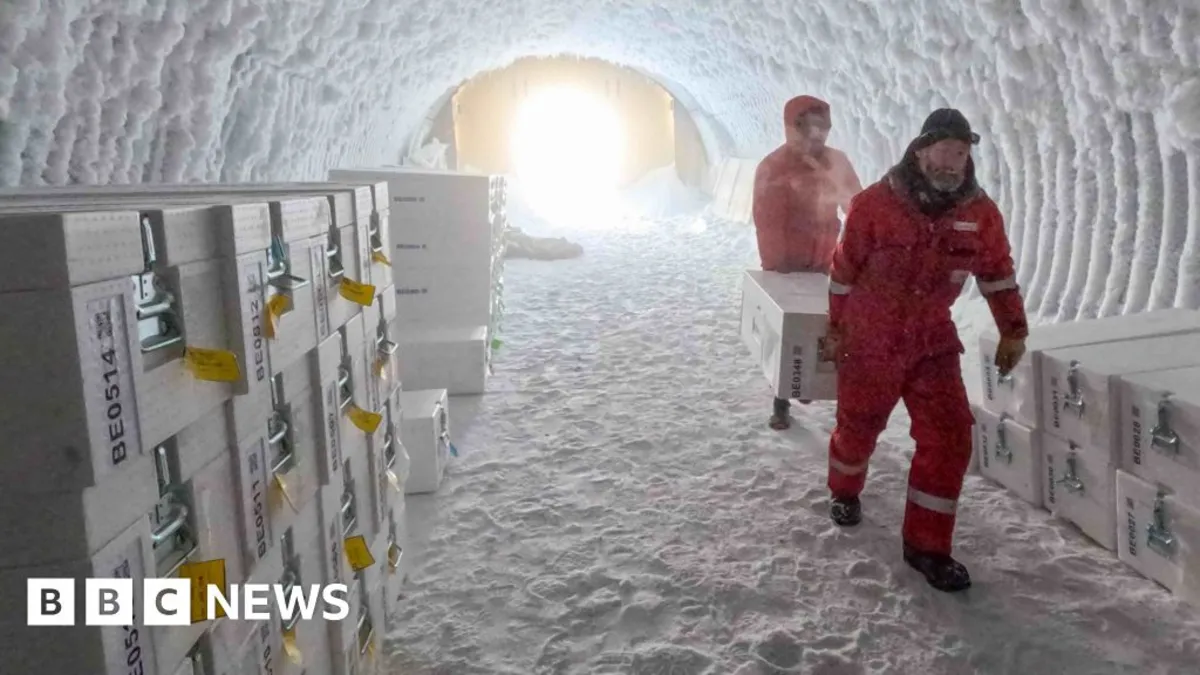
In a groundbreaking development, an ice core estimated to be over 1.5 million years old has recently arrived in the UK. Scientists are poised to melt this unique ice core in order to unveil crucial insights about our planet's climate history. This remarkable cylindrical specimen, recognized as the oldest ice on Earth, was extracted from deep within the Antarctic ice sheet. Encased within this ancient ice are millennia of data that experts believe could significantly alter our understanding of climate change.
BBC News was granted exclusive access to the -23°C freezer room at the British Antarctic Survey in Cambridge, where the precious ice samples are meticulously stored. Dr. Liz Thomas, the head of ice core research, emphasized the importance of this ice, stating, "This is a completely unknown period of our Earth's history." The room is secured with flashing red warning lights and features an emergency escape hatch, underscoring the meticulous precautions taken during this critical research. Scientists and staff are limited to just 15-minute visits, dressed in padded overalls, boots, hats, and gloves to combat the extreme cold.
As the team embarks on a seven-week process to slowly melt the ancient ice core, they expect to release valuable materials, including ancient dust, volcanic ash, and microscopic marine algae known as diatoms. These elements are crucial for understanding past wind patterns, temperatures, and sea levels, dating back more than a million years. The melted liquid will be transported via tubes into an adjacent lab, which is one of the few facilities worldwide equipped to conduct this specialized analysis.
The extraction of these ice cores was a significant multinational effort, costing millions and involving the collaboration of various institutions. The ice was carefully cut into 1-meter blocks and transported by boat before being transferred into a cold van that brought it to Cambridge. Engineer James Veal, who assisted in the extraction near the Concordia base in eastern Antarctica, expressed his awe at handling the ice, noting, "To hold that in my carefully gloved hands and be very careful not to drop the sections - it was an amazing feeling."
Collaborating institutions in Germany and Switzerland have also received cross-sections of the 2.8-kilometer core. The research teams may uncover evidence from a time over 800,000 years ago when carbon dioxide concentrations were possibly as high as, or even higher than, current levels. Dr. Thomas believes that this data could provide valuable insights into our future climate as we grapple with the consequences of warming gases in the atmosphere.
Dr. Thomas elaborated on the need to explore historical climate changes, stating, "Our climate system has been through so many different changes that we really need to be able to go back in time to understand these different processes and different tipping points." Unlike previous eras with high greenhouse gas levels, the rapid increase in warming gases over the last 150 years has been largely driven by human activity, pushing us into uncharted territory. Nonetheless, scientists are hopeful that the ice's record of our planet's environmental history can offer valuable guidance.
The research team aims to identify chemical isotopes in the melted ice that could reveal wind patterns, temperatures, and rainfall from periods spanning between 800,000 and 1.5 million years ago, or even longer. Utilizing an inductively coupled plasma mass spectrometer (ICPMS), they will analyze over 20 elements and trace metals, including rare earth elements, sea salts, and indicators of past volcanic eruptions. This research will deepen our understanding of the Mid-Pleistocene Transition, a significant climatic shift that occurred between 800,000 and 1.2 million years ago, fundamentally altering the planet's glacial cycles.